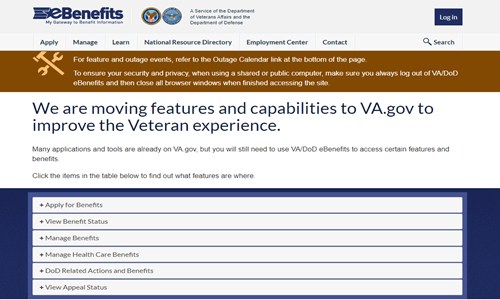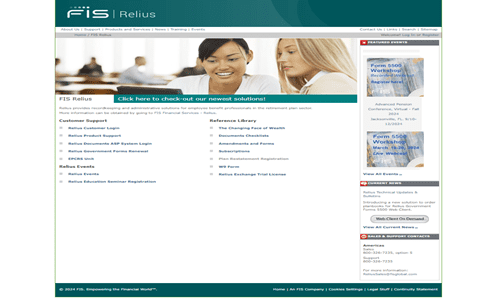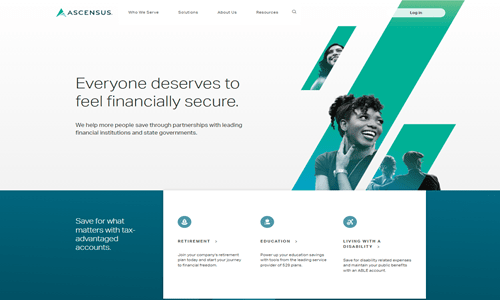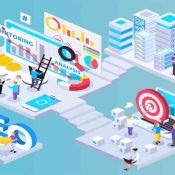
Pension Management Software: A Complete Guide in 2024
In today’s world, planning for a secure retirement is more crucial than ever. Pension management software ensures these retirement plans’ smooth and efficient administration. This software offers a comprehensive solution for organizations and individuals, streamlining the complexities of pension management.
What is Pension Management Software?
Pension management software serves as a technological solution engineered to automate and streamline the administration of pension plans. Acting as a centralized hub, it facilitates the management of diverse aspects inherent in a pension scheme, encompassing:
Member Data Management:
Efficiently manages member records, encompassing personal information, employment history, contribution details, and beneficiary designations.
Contribution Tracking:
Tracks contributions made by employers and employees to pension funds, including voluntary contributions, ensuring accurate record-keeping.
Investment Management:
It provides tools for overseeing pension fund investments, such as portfolio tracking, asset allocation, performance analysis, and investment planning, to ensure prudent financial management.
Benefit Calculations:
Computes retirement benefits based on member contributions, years of service, salary history, and pension plan regulations, facilitating accurate benefit estimations and payout schedules.
Reporting and Compliance:
Assists in meeting regulatory requirements and reporting obligations related to pension plans, generating regulatory reports, tax filings, and participant disclosures, ensuring adherence to legal standards and transparency.
Key Features of Pension Management Software
Member Data Management:
Efficiently manages member records, including personal information, employment history, contribution details, and beneficiary designations.
Contribution Tracking:
Tracks contributions made by employers and employees to pension funds, including voluntary contributions, ensuring accurate record-keeping and contribution reconciliation.
Investment Management:
Provides tools for overseeing pension fund investments, such as portfolio tracking, asset allocation, performance analysis, and investment planning, ensuring prudent financial management and optimization of investment strategies.
Benefit Calculations:
Computes retirement benefits based on member contributions, years of service, salary history, and pension plan regulations, facilitating accurate benefit estimations, retirement projections, and payout schedules.
Reporting and Compliance:
Assists in meeting regulatory requirements and reporting obligations related to pension plans, generating regulatory reports, tax filings, and participant disclosures, ensuring adherence to legal standards and transparency in pension plan administration.
Communication and Member Services:
Offers member self-service portals or communication tools for facilitating interactions between plan administrators and participants, providing online access to account information, benefit statements, retirement planning resources, and communication channels for addressing member inquiries and concerns.
Automation and Workflow Management:
Automates routine administrative tasks, streamlining enrollment, contributions processing, benefit calculations, and compliance reporting, improving efficiency and reducing manual errors.
Security and Data Protection:
Ensures the security and confidentiality of member data through robust data encryption, access controls, and compliance with data protection regulations, safeguarding sensitive information from unauthorized access or data breaches.
Benefits of Using Pension Management Software
Efficiency and Time Savings:
Pension management software automates routine administrative tasks, such as member data management, contribution tracking, and benefit calculations, reducing manual effort and saving time for plan administrators.
Accuracy and Compliance:
By automating calculations and reporting processes, pension management software helps ensure accuracy in benefit calculations and compliance with regulatory requirements, minimizing the risk of errors and penalties.
Improved Member Experience:
Pension management software provides self-service portals and communication tools for plan participants. It offers online access to account information, benefit statements, and retirement planning resources, enhancing member satisfaction and engagement.
Enhanced Financial Management:
With investment management and portfolio tracking features, pension management software enables organizations to optimize investment strategies, monitor fund performance, and make informed decisions to maximize returns for plan participants.
Streamlined Reporting:
Pension management software automatically generates regulatory reports, tax filings, and participant disclosures, streamlining reporting processes and ensuring timely submission of required documents to regulatory authorities.
Cost Savings:
By reducing manual effort, improving efficiency, and minimizing errors, pension management software helps organizations save on administrative costs associated with pension plan administration, maximizing cost-effectiveness and operational efficiency.
Data Security and Confidentiality:
Through strong data encryption, access controls, and adherence to data protection laws, pension administration software guarantees the security and confidentiality of member data, protecting private information from illegal access or data breaches.
Scalability and Flexibility:
Pension management software is scalable and flexible, capable of adapting to organizations’ changing needs and requirements as they grow and evolve. This ensures long-term suitability and value for investment in pension administration technology.
Types of Pension Management Software
On-Premises Software:
- On-premises pension management software is installed and maintained locally on the organization’s servers or infrastructure.
- It offers full control over data security and customization but requires upfront investment in hardware and IT resources for maintenance and support.
Cloud-Based Software:
- Cloud-based pension management software is hosted and accessed over the Internet, eliminating the need for on-site installation and maintenance.
- It offers scalability, flexibility, and accessibility from anywhere with a web connection, making it ideal for companies seeking agility and cost-effectiveness.
Integrated Financial Management Suites:
- Integrated financial management suites include pension management modules as part of broader financial software solutions.
- These suites offer comprehensive features for managing finances, accounting, payroll, and human resources, providing organizations with an all-in-one solution for managing pension plans alongside other financial functions.
Specialized Pension Administration Systems:
- Specialized pension administration systems are designed specifically for pension fund administrators, retirement plan providers, and financial institutions that manage pension plans.
- These systems offer superior functions for managing member statistics, contribution tracking, benefit calculations, compliance reporting, and funding management, tailored to the particular needs of pension management.
Open-Source Pension Management Software:
- Open-supply pension management software is evolved and disbursed with open access to its supply code, permitting agencies to personalize and regulate the software to meet their unique requirements.
- It offers flexibility and cost-effectiveness but may require technical expertise for customization and ongoing maintenance.
Modular Pension Management Solutions:
- Modular pension management solutions offer modular architecture, allowing organizations to choose and integrate specific modules or functionalities based on their needs.
- These solutions provide flexibility and scalability, enabling organizations to add or remove modules as needed and tailor the software to their evolving requirements.
Legacy Pension Systems:
- Legacy pension systems are older, often outdated software solutions that some organizations may still use.
- While they may lack modern pension management software’s advanced features and flexibility, legacy systems may continue to be maintained and used due to historical data retention, compliance requirements, or budget constraints.
Top Pension Management Software Solutions
PensionPro:

PensionPro is a comprehensive pension administration software for third-party administrators (TPAs) and retirement plan consultants. It offers features for member data management, contribution tracking, compliance reporting, investment management, and client communication.
Pros:
Robust features for pension plan administration, customizable workflows, integration with industry-leading providers, and responsive customer support.
Cons:
New users may have a learning curve; additional customization may require professional services.
Services Provided:
Member data management, contribution tracking, compliance reporting, investment management, and client communication.
Pricing Package:
Pricing for PensionPro is available upon request and may vary completely based on the agency’s dimensions and needs.
eBenefits Platform:

The eBenefits Platform is a cloud-based pension management solution that offers a user-friendly interface and comprehensive features for pension administration, including member enrollment, contribution processing, benefit calculations, compliance reporting, and investment tracking.
Pros:
Intuitive interface, scalable cloud-based architecture, customizable reporting, seamless integration with payroll systems.
Cons:
Limited customization options may not support complex pension plan structures, and pricing based on usage may be higher for larger organizations.
Services Provided:
Member enrollment, contribution processing, benefit calculations, compliance reporting, and investment tracking.
Pricing Package:
Pricing for the eBenefits Platform is available upon request and may be based on factors such as the number of users and plan participants.
Relius Administration:

Relius Administration is a comprehensive pension administration software solution for TPAs, plan sponsors, and financial institutions. It offers features for plan setup, participant management, contribution processing, compliance testing, and reporting.
Pros:
Extensive features for pension plan administration, flexible customization options, integration with industry-leading providers, and responsive customer support.
Cons:
MNew users may require training, additional modules may incur extra costs, and pricing based on usage may be higher for larger organizations.
Services Provided:
Plan setup, participant management, contribution processing, compliance testing, and reporting.
Pricing Package:
Pricing for Relius Administration is available upon request and may vary based on the size and complexity of the organization’s pension plans.
Ascensus:

Ascensus offers a range of pension administration solutions for TPAs, plan sponsors, and financial advisors. Its software platform provides plan administration, recordkeeping, compliance monitoring, and participant communication features.
Pros:
Established provider with a strong reputation, comprehensive features for pension plan administration, flexible customization options, and responsive customer support.
Cons:
Pricing may be higher compared to a few competitors. Extra modules or services can also incur greater fees and won’t assist complex pension graph systems.
Services Provided:
Plan administration, recordkeeping, compliance monitoring, and participant communication.
Pricing Package:
Pricing for Ascensus pension administration solutions is to be had upon request and may range based totally on the business enterprise’s particular requirements and the size of its pension plans.
Implementation and Integration
Once you’ve chosen a software solution, partnering with an experienced implementation team is crucial. The team will ensure seamless integration with existing systems and provide user training.
Common Challenges and Solutions
Complexity of Pension Regulations:
Challenge:
Pension regulations are often complex and subject to frequent changes, making it challenging for pension management software to keep up with compliance requirements.
Solution:
Regularly update and maintain pension management software to ensure compliance with regulatory changes. Additionally, they provide training and support to users on new regulations and compliance procedures.
Data Security Concerns:
Challenge:
Pension control software programs deal with touchy personal and economic records, raising statistics protection and privacy issues.
Solution:
Implementation of sturdy information encryption, entry to controls, and compliance with statistics protection rules (together with GDPR and CCPA) to ensure the safety and confidentiality of member statistics. Everyday protection audits and exams to perceive and address vulnerabilities.
Integration with Legacy Systems:
Challenge:
Integration with existing legacy systems and third-party applications can be complex and time-consuming, leading to interoperability issues.
Solution:
Development of standardized APIs and data formats to facilitate seamless integration between pension management software and legacy systems. Collaboration with software vendors and IT teams to ensure compatibility and data exchange between systems.
User Adoption and Training:
Challenge:
Pension management software may have a steep learning curve for new users, leading to resistance to change and low adoption rates.
Solution:
Comprehensive training programs and user documentation for onboarding new users and familiarizing them with the software’s features and functionalities. They are providing ongoing support and guidance to address user queries and concerns.
Scalability and Performance:
Challenge:
Pension management software needs to scale effectively to accommodate growing volumes of data and users while maintaining optimal performance.
Solution:
Utilization of scalable cloud-based infrastructure and architectures to support increasing data loads and user concurrency. Performance optimization measures such as database tuning, caching, and load balancing are used to ensure responsiveness and reliability.
Customization and Flexibility:
Challenge:
Pension management software programs may need more flexibility and customization selections to meet different groups’ specific wishes and necessities.
Solution:
Development of configurable and customizable functions inside the software to deal with various pension layout systems, workflows, and reporting requirements. Collaboration with customers to recognize their unique needs and provide tailored answers.
Future Trends in Pension Management Software:
Artificial Intelligence (AI) and Machine Learning (ML):
- AI and ML technologies will increasingly shape pension management software, enabling advanced analytics, predictive modeling, and automation of administrative tasks.
- AI-powered algorithms will enhance accuracy in benefit calculations, identify patterns in member behavior, and provide personalized recommendations for retirement planning.
Blockchain Technology:
- Blockchain technology will revolutionize pension management software by enhancing data security, transparency, and trust in pension transactions.
- Blockchain-based solutions will offer immutable records of pension contributions, funding transactions, and gain payouts, reducing the danger of fraud and ensuring the integrity of pension statistics.
Digital Identity and Biometrics:
- Digital identity solutions and biometric authentication methods will become integral components of pension management software, enhancing the security and convenience of accessing pension accounts and conducting transactions.
- Biometric authentication, which includes fingerprint or facial recognition, will replace conventional authentication techniques, improving consumer enjoyment and reducing the danger of identification robbery.
Cloud Computing and SaaS Adoption:
- The adoption of cloud computing and software program-as-a-service (SaaS) models will keep rising, using the shift in the direction of cloud-based pension management software program programs.
- Cloud-based solutions offer scalability, flexibility, and accessibility, enabling pension administrators to manage pension plans from anywhere with an internet connection while reducing IT infrastructure costs and maintenance overhead.
Enhanced Member Engagement:
- Pension management software will enhance member engagement and empowerment through personalized communication, retirement planning tools, and interactive dashboards.
- Gamification elements, financial wellness programs, and social collaboration features will encourage participation and education among pension plan participants, leading to better retirement outcomes.
Regulatory Compliance Automation:
- Automation of regulatory compliance processes will become standard in pension management software, leveraging AI and robotic process automation (RPA) to ensure adherence to complex pension regulations and reporting requirements.
- Automated compliance monitoring, auditing, and reporting capabilities will streamline regulatory compliance efforts and reduce the risk of non-compliance penalties.
Integration with Financial Planning Tools:
- Integration with financial planning tools and robo-advisors will enable seamless retirement planning and investment management within pension management software.
- Integration with external financial data sources, such as bank accounts, investment portfolios, and social security benefits, will provide a holistic view of retirement finances and facilitate informed decision-making.
Data Analytics for Risk Management:
- Advanced data analytics and risk management tools will help pension administrators identify and mitigate risks associated with pension investments, funding levels, longevity risk, and regulatory compliance.
- Predictive analytics models will forecast future funding requirements, investment performance, and pension liabilities, enabling proactive risk management strategies.
FAQs
What security measures are in place to protect sensitive pension data within the software?
Pension control software employs strong security features, including information encryption, admission to controls, multi-issue authentication, and compliance with facts protection rules to safeguard sensitive pension statistics from unauthorized admission to or breaches.
How does pension management software handle complex pension regulations and compliance requirements?
Pension management software automates compliance processes, tracks regulatory changes, generates compliance reports, and provides alerts and notifications to ensure adherence to complex pension regulations and reporting requirements.
Can pension management software integrate with our organization’s existing payroll systems and financial software?
Pension management software offers integration capabilities with existing payroll systems, financial software, and third-party applications through standardized APIs and data formats, enabling seamless data exchange and workflow integration.
What training and support options are available for users transitioning to pension management software?
Pension management software providers offer comprehensive training programs, user documentation, online resources, and customer support services to assist users in transitioning to the software, onboard new users, and address any questions or concerns.
How does pension management software address the needs of pension plans with unique structures or requirements?
Pension management software provides configurable features, customizable workflows, and flexible reporting options to accommodate pension plans’ diverse needs and requirements with unique structures, rules, and reporting obligations.
What scalability options are available with pension management software to support growing pension plans and user volumes?
Pension management software offers scalable architecture, cloud-based deployment options, and flexible pricing models to support growing pension plans and user volumes. This allows organizations to expand their usage and adapt to changing requirements.
Conclusion
In conclusion, pension control software programs stand at the vanguard of technological innovation in retirement planning and management. With its advanced features, robust safety features, and seamless integration capabilities, pension control software streamlines the complexities of pension diagram administration, enhances compliance, and empowers organizations to offer superior carriers to design individuals. Because the pension landscape continues to evolve, embracing emerging tendencies with artificial Genius, blockchain generation, and superior member engagement could be paramount for pension control software vendors to stay ahead of the curve and meet the evolving needs of the industry. By leveraging the competencies of pension management software, agencies can confidently navigate the demanding situations of pension management, ensuring the financial security and proper well-being of retirees for years yet to come.




